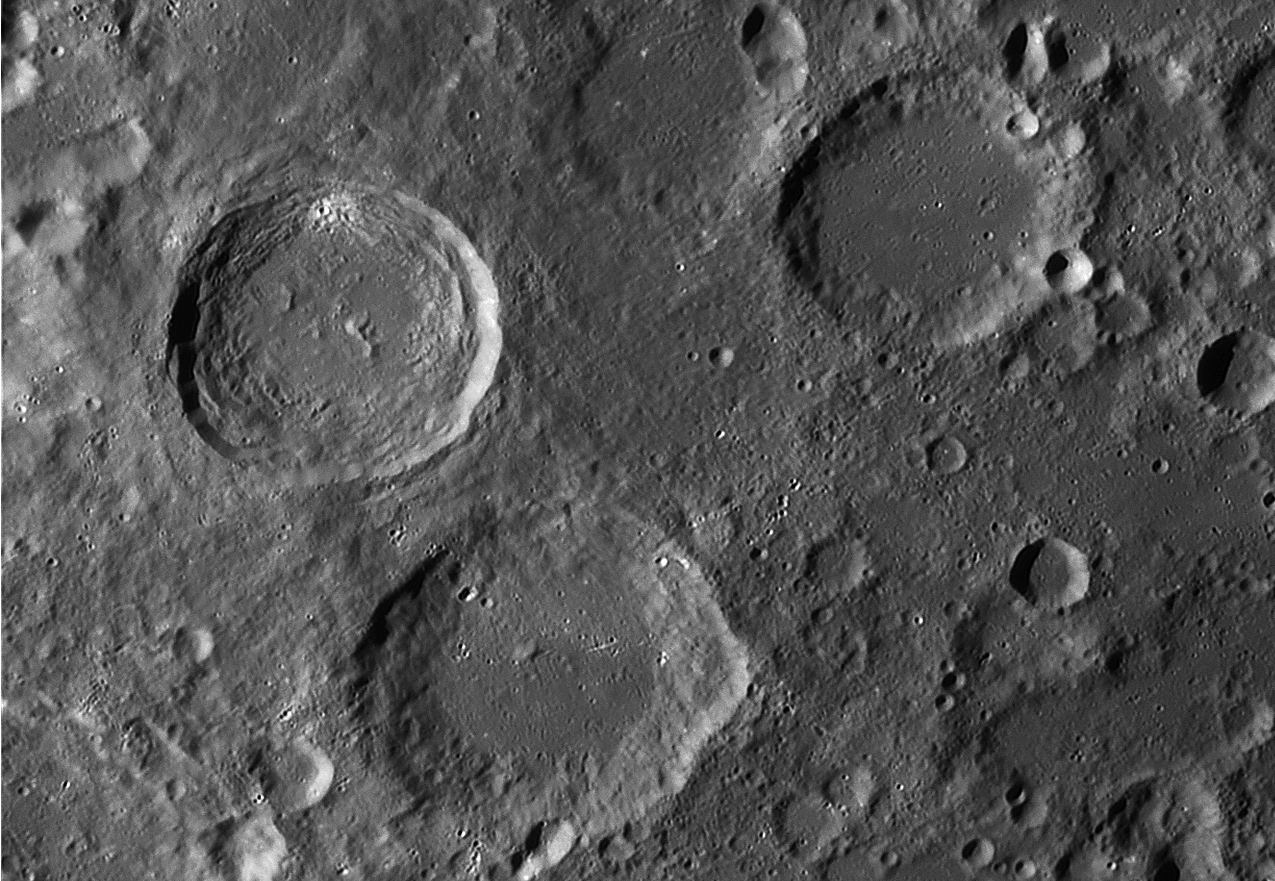
image by Wes Higgins
I admit there isn’t a lot new to say about this area, but this is a gorgeous view. We have had LPOD’s of Werner and the very bright craterpit on its lower wall, and of Aliacensis (bottom left), but apparently not any/many of Apianus (top right). The high resolution of Wes’ image reveals details not visible readily on other terrestrial images. One feature of interest is the rough alignment of small bright pits from the southeast rim of Werner leading onto the floor of Aliacensis. It suggests that a line of ejecta fell that way, and indeed the northern third of the wall and floor of Aliacensis gives the impression of a thin layer of material that brushed over its surface. Its easy to see why there have been no LPODs focused on Apianus. Like many of the craters in the southern highlands it is old, tired and unremarkable. You can see a hint of the rim-crest scarp (see Werner for a little-modified one), but the inner wall is riddled with smaller craters and generally rounded so much its original form is gone. The floor is punctured with short lines of pits whose alignment suggests they are secondaries from Tycho. And notice the small unpitted patch of dark material on the floor. This is the type of smoothness that raises the question of possible small scale, non-mare highland volcanism. But that can’t be.
Technical Details:
08-03-07. 18" Reflector, Infinity 2-1m camera, MAP /99, Registered AVI processing, stack of 540 frames.
Related Links:
Rükl plates 55, 56 & 65
Yesterday's LPOD: Not the Dark Side
Tomorrow's LPOD: The End of the Beginning
COMMENTS?
Register, Log in, and join in the comments.



